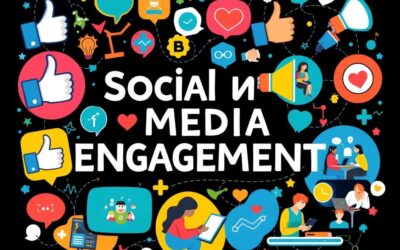 Social media platforms are full of content. But what if the key to standing out isn’t just what you post? It’s about getting the social media image sizes right. Using the wrong sizes can make even great content hard to see.
Social media platforms are full of content. But what if the key to standing out isn’t just what you post? It’s about getting the social media image sizes right. Using the wrong sizes can make even great content hard to see.
Key Takeaways.
- Incorrect social media graphic sizes can reduce visibility and engagement.
- Platforms like Facebook, Instagram, and LinkedIn each require unique image dimensions.
- Higher resolution doesn’t always mean better performance—optimize for each platform’s specs.
- Aspect ratios directly affect how images appear on feeds and story sections.
- Ignoring 2025’s updated guidelines risks lower reach and slower loading times.
This guide shows you the exact social media image sizes to avoid problems. From Instagram Stories to LinkedIn headers, every pixel counts. Learn how to meet 2025’s standards and make your visuals pop.
Understanding the Importance of Optimal Social Media Image Sizes.
Visual content is key on social platforms, but not all images work the same. Picking the right image dimensions for social media and ideal image resolution grabs attention and avoids problems. Badly sized images can cause pixelation, cropping, or slow loading, hurting your brand and how people interact with it.
Why Image Dimensions Matter for Engagement.

Platforms like Instagram and Pinterest prefer posts that fit their layouts. Wrong sizes lead to distorted thumbnails, lowering clicks. A 2023 Meta study showed posts with the right aspect ratios got 35% more engagement. Clear, well-framed images are more trusted and shared.
How Proper Sizing Affects Content Performance.
Algorithms like content that loads fast and looks good. Here’s why sizing is important:
- Wrong sizes might crop or scale out important parts.
- Right sizes make sure your content looks sharp on all devices.
The Technical Impact of Image Resolution.
Low-res images get blurry when zoomed in, while too high-res slows down pages. The ideal image resolution is about finding the right balance. For example, 72-100 DPI is good for most sites, but Twitter needs 440x220px for profile pics and 1080x1080px for posts. Ignoring this can make logos look pixelated or slow down your content.
Key Factors That Influence Social Media Graphic Sizes in 2025.

User behavior and new tech are changing what social media graphic sizes should be. Brands need to keep up with these changes to make sure their visuals work well.
- Mobile-first design is key, with vertical scrolling trends making portrait-oriented optimal image sizes better for feeds and stories.
- New display tech like 4K screens and foldable devices need higher resolution graphics to look good without pixelation.
- AI-driven platforms adjust images for fast loading, but creators must find a balance between quality and file size for clear visuals.
- Updates like Instagram’s Reels and TikTok’s adaptive layouts mean image dimensions and aspect ratios need regular updates.
Platforms like Facebook and LinkedIn change their UIs every quarter, introducing new post formats. This means image sizes need to change too. Staying flexible with content ensures it works well on different platforms without sticking to old rules.
Platform-Specific Social Media Image Sizes for Maximum Impact.

Optimizing visuals for each platform ensures your content aligns with algorithm preferences. Follow these recommended image dimensions to avoid pixelation or cropping:
Facebook Image Dimensions Guide.
Facebook prioritizes crisp visuals. Use these specs:
- Feed posts: 1200×630 pixels (12:5 ratio).
- Profile picture: 180×180 pixels (PNG or JPEG).
- Cover photos: 820×312 pixels (JPEG).
- Ads: 2048×2048 pixels max (PNG preferred).
Instagram Optimal Photo and Story Sizes.
Instagram’s algorithm favors social media photo sizes that fit its grid. Key specs:
- Square posts: 1080×1080 pixels.
- Landscape posts: 1080×1350 pixels.
- Stories: 1080×1920 pixels (vertical).
- Reels: 1080×1920 (4:5 ratio).
Twitter Image Recommendations.
Twitter enforces strict limits. Upload images at:
- Timeline posts: 1024×576 pixels (2:1).
- Headers: 1500×500 pixels (JPEG).
- Profile: 400×400 pixels.
LinkedIn Professional Specifications.
LinkedIn demands polished visuals. Use:
- Profile photos: 400×400 pixels (PNG).
- Articles: 800×420 pixels (JPEG).
- Cover photos: 1584×396 pixels.
TikTok Visual Requirements.
TikTok thrives on vertical content. Follow these:
- Main posts: 1080×1920 pixels.
- Profile: 112×112 pixels.
- Cover: 1200×630 pixels.
Pinterest Pin Guidelines.
Pinterest rewards high-performing pins with:
- Standard pins: 2:3 ratio (e.g., 1000×1500).
- Shopping pins: 2048×2048 pixels.
- Aspect ratios: 4:5 or 1:2.35 for visibility.
Best Practices for Creating and Adapting Images Across Platforms.
Learning social media image guidelines begins with designing images that can be easily changed. Use templates with social media image sizes that are flexible. Start by making “master images” at the biggest size needed (like Instagram’s 1080x1920px feed posts).
This way, you can crop images without losing important details.
- Build safe zones (central 60% of the frame) to protect logos/text from platform cropping.
- Adopt vector graphics for logos and text to ensure clarity at any scale.
- Test auto-resizing tools like Canva’s “Multi-Post Creator” or Adobe Spark’s responsive templates.
“Images resized without considering aspect ratios lose 40% of their engagement.” — 2024 Social Media Marketing Report
Use free tools like Squoosh (Web P format) to make images load faster. Choose JPEGs for photos and PNGs for graphics needing transparency. Always check brand guidelines for color palettes (like Coca-Cola’s signature red) to keep your visual identity consistent.
For responsive design, start with 1:1 squares (1080x1080px). These can be adapted for Stories, LinkedIn headers, or Pinterest pins.
Use scheduling tools like Later or Hootsuite to automate image cropping for each platform. Remember, keeping your brand consistent is more important than small pixel changes. Follow these steps to cut production time by up to 30% and increase engagement across platforms.
Conclusion: Mastering Your Visual Strategy with the Right Image Dimensions.
Choosing the right image dimensions for social media is key to grabbing attention. Sites like Facebook, Instagram, and LinkedIn have specific social media image guidelines. These rules help images load fast and fit well with user experiences.
Following these rules helps avoid pixelation, cropping, or distorted images. Such issues can hurt how much people engage with your content.
Creating a simple checklist can make following these rules easier. First, check the dimensions for each platform. For example, Instagram posts should be 1080x1350px, and Pinterest pins should be 800x1200px. Tools like Canva or Adobe Spark can help adjust images quickly, saving time and keeping quality high.
Being consistent in image sizes helps your brand look professional. It also makes your content more visible to algorithms.
New trends like TikTok’s vertical videos and AR filters are coming. Brands need to get ready for these by using the right dimensions. This ensures their content works well with new formats.
Start by checking your current content against these guidelines. Then, make any needed changes to fit the rules. Keep an eye on how your content performs after these updates. This will show you how better sizing can improve your reach.
By following these tips, businesses can stay ahead in 2025. Using the right image dimensions for social media makes your content load faster and look better. It also helps your brand tell a clear story, which is key for success in digital marketing.


0 Comments